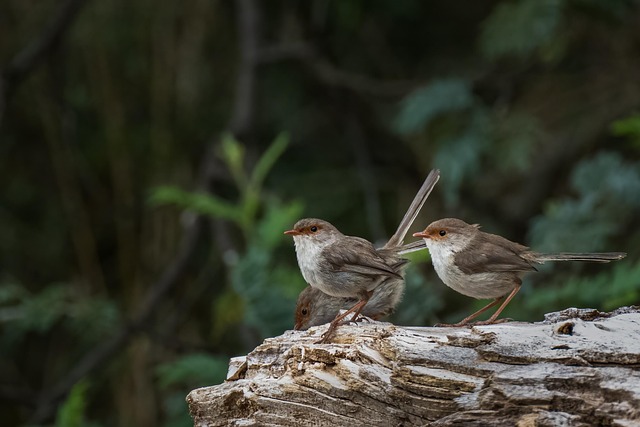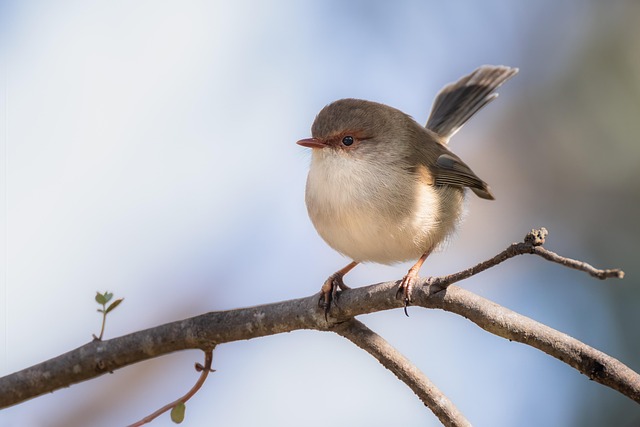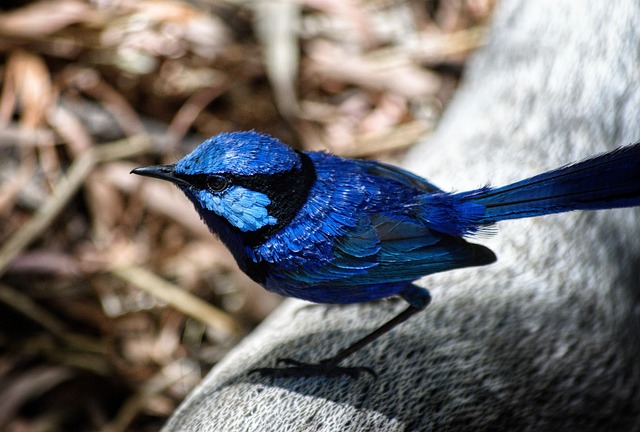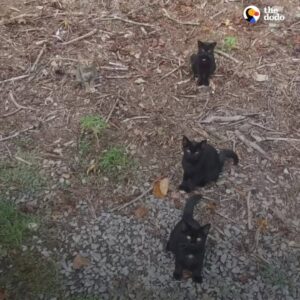Imagine you’re walking through the Australian bushland, and a tiny, living sapphire suddenly flits across the path. It’s a blue so bright, so intense, it seems to vibrate—an almost impossibly electric color.
You’ve just met the Splendid Fairywren (Malurus splendens), a bird that not only lives up to its name but is arguably the most colorful, dazzling tiny bird on the entire continent.
This tiny creature, barely 5 inches long, is more than just a pretty face. It’s a bird of dramatic transformations, complex social lives, and pure, concentrated charisma. Here’s why this “blue diamond” of the scrublands is so fascinating.

1. The Color Is Not Pigment—It’s a Trick of the Light
The first thing that stuns you is the color of the breeding male. He is a breathtaking mosaic of vivid blues: a bright, iridescent sky-blue on his crown and cheek patches, set against a deeper, richer cobalt and violet-blue on his body. This is all accented by a sharp black mask, bill, and chest band, which makes the blue pop even more.
But here’s the most amazing part: the bird isn’t blue.
Like a butterfly’s wing or a soap bubble, that dazzling color is not from pigment. It’s iridescence. The feather structures are microscopically layered to refract sunlight, scattering and reflecting only the blue wavelengths. This is why the color seems to shimmer, change, and glow with an electric, metallic sheen that no pigment could ever produce.
2. The “Eclipse” Transformation
Here is the great secret of the Splendid Fairywren: that stunning blue is temporary.
After the breeding season, the male undergoes a dramatic molt into what is called an “eclipse plumage.” He sheds his brilliant blue feathers and replaces them with the same dull, grayish-brown plumage of the females. The only thing that sets him apart is his black bill and (sometimes) a few lingering blue feathers in his wings and tail.
He becomes a “plain brown bird,” a master of camouflage, saving his energy. Then, as the next breeding season approaches, he transforms all over again, re-emerging in his full, splendid glory.

3. A Bird of Two Sexes: Dazzling vs. Demure
This is one of the most extreme examples of sexual dimorphism (a visible difference between sexes) in the bird world.
- The Male (in breeding plumage): A dazzling, iridescent show-off. His entire purpose is to be as bright and visible as possible to attract mates and defend his territory.
- The Female: Modest, practical, and perfectly camouflaged. She is a soft, grayish-brown with a distinctive reddish-orange (russet) tail and a buffy-white eye-ring.
This difference is a classic evolutionary strategy. While the male is busy being a target, the female’s dull colors keep her (and her nest) perfectly hidden from predators like butcherbirds, kookaburras, and snakes.
4. They Have a Complex Social Life
These tiny birds are far from simple. They live in complex, cooperative breeding groups. This means a dominant pair (one male and one female) will have their nest, but they will be assisted by a team of “helpers.”
These helpers are often the male offspring from previous seasons, still in their brown eclipse plumage. They stick around to help their parents feed the new nestlings, defend the territory from rivals, and watch for predators. It’s a sophisticated family-run operation.
Quick Facts: The Splendid Fairywren
- Scientific Name: Malurus splendens
- Size: About 5.5 inches (14 cm) long, with a long, upward-cocked tail.
- Habitat: Prefers arid and semi-arid regions. Found in dense scrubland, heathland, and woodlands across much of western and central Australia.
- Diet: Almost exclusively insects (“insectivore”).
- Key Feature: The male’s brilliant, iridescent blue breeding plumage.

Where to Find This Tiny Blue Gem
You won’t find these birds in dense, dark rainforests. Splendid Fairywrens are creatures of the “mallee” and “mulga”—the scrubby, dry woodlands and heathlands that cover vast parts of Australia.
They are terrible fliers but incredible hoppers. To find them, walk quietly near dense, low-lying bushes and listen for their high-pitched, energetic “trill” or “reel” (a call that sounds like a tiny, high-speed sewing machine).
Then, just watch. They usually travel in small, bouncy family groups. You’ll see a group of small brown birds… and then, like a flash of lightning, the electric-blue male will appear among them.
It’s a tiny, unforgettable flash of magic—a true “splendid” jewel of the bush.
Have you been lucky enough to see a Splendid Fairywren in the wild? Share your experience in the comments!


